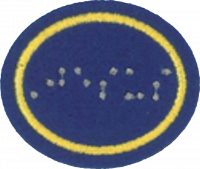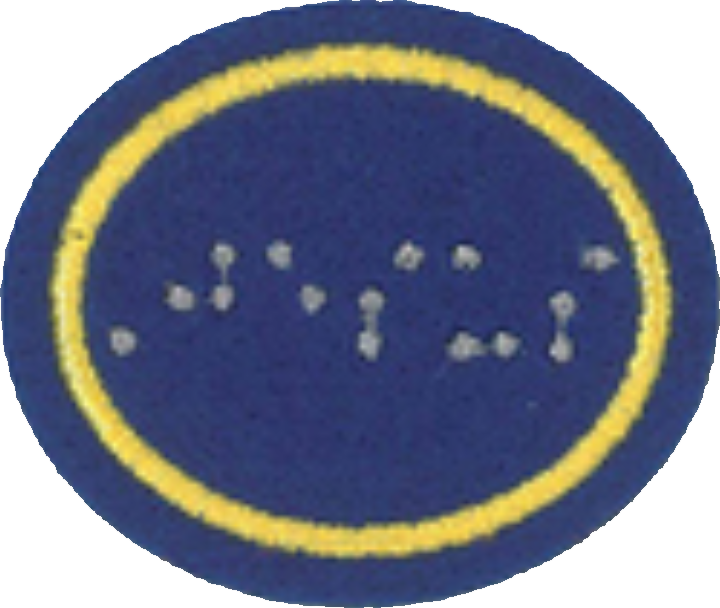Difference between revisions of "AY Honors/Braille/Requirements/es"
(Created page with "Especialidades JA/Braille/Requisitos") |
(Created page with "</noinclude>Buscar una tabla para examen de vista y seguir las instrucciones para probar su visión. ¿Qué constituye una buena visión a diferencia de la ceguera legal? <noi...") |
||
| Line 6: | Line 6: | ||
| − | <b>1. <section begin=req1 /><noinclude> | + | <b>1. <section begin=req1 /><noinclude></noinclude>¿Qué es un sistema de lectura táctil? |
| − | </noinclude> | + | <noinclude></noinclude><section end=req1 /></b> |
| − | <noinclude | ||
| − | |||
| − | <b>2. <section begin=req2 /><noinclude> | + | <b>2. <section begin=req2 /><noinclude></noinclude>Discutir quién necesita un sistema de lectura táctil y qué se necesita para leerlo. |
| − | </noinclude> | + | <noinclude></noinclude><section end=req2 /></b> |
| − | <noinclude | ||
| − | |||
| − | :<b>a. <section begin=req2a /><noinclude> | + | :<b>a. <section begin=req2a /><noinclude></noinclude>Buscar una tabla para examen de vista y seguir las instrucciones para probar su visión. ¿Qué constituye una buena visión a diferencia de la ceguera legal? |
| − | </noinclude> | + | <noinclude></noinclude><section end=req2a /></b> |
| − | <noinclude | ||
| − | |||
| − | :<b>b. <section begin=req2b /><noinclude> | + | :<b>b. <section begin=req2b /><noinclude></noinclude>Usando una actividad multisensorial, evaluar su sensibilidad epicrítica. |
| − | </noinclude> | + | <noinclude></noinclude><section end=req2b /></b> |
| − | <noinclude | ||
| − | |||
| − | <b>3. <section begin=req3 /><noinclude> | + | <b>3. <section begin=req3 /><noinclude></noinclude>Discutir brevemente la historia de los sistemas de lectura táctil, incluyendo los siguientes puntos: |
| − | </noinclude> | + | <noinclude></noinclude><section end=req3 /></b> |
| − | <noinclude | ||
| − | |||
:<b>a. <section begin=req3a /><noinclude><div lang="en" dir="ltr" class="mw-content-ltr"> | :<b>a. <section begin=req3a /><noinclude><div lang="en" dir="ltr" class="mw-content-ltr"> | ||
Revision as of 20:36, 22 March 2021
1. ¿Qué es un sistema de lectura táctil?
2. Discutir quién necesita un sistema de lectura táctil y qué se necesita para leerlo.
- a. Buscar una tabla para examen de vista y seguir las instrucciones para probar su visión. ¿Qué constituye una buena visión a diferencia de la ceguera legal?
- b. Usando una actividad multisensorial, evaluar su sensibilidad epicrítica.
3. Discutir brevemente la historia de los sistemas de lectura táctil, incluyendo los siguientes puntos:
- a.
Who was Louis Braille?
- b.
List some of the tactile reading systems that competed with braille in “The War of the Dots.”
Explain how braille systems are adapted to different languages.
Demonstrate your understanding of a braille cell by writing your name in braille with a craft, LEGO, or other creative method.
Discover how braille is written.
Discuss what materials might be the most helpful to have translated into braille and what you would want to be available in braille in the event you became blind.
Identify legal and cultural provisions in your country that make braille more accessible.
Who was Adventist pioneer Austin O. Wilson and what did he do?
Discuss ways to meet and interact with a person who is blind. Do one of the following:
- a.
Visit a facility that serves people who are blind. Before the visit, ask students to write down their predictions about their perceptions of blind people. Collect and keep responses to review after the visit.
- b.
Invite a blind person to speak to your group about his/her experiences. Before the visit, ask students to write down their predictions about their perceptions of blind people. Collect and keep responses to review after the visit.


